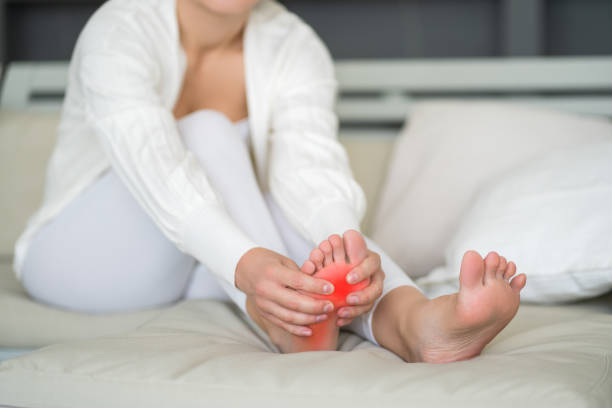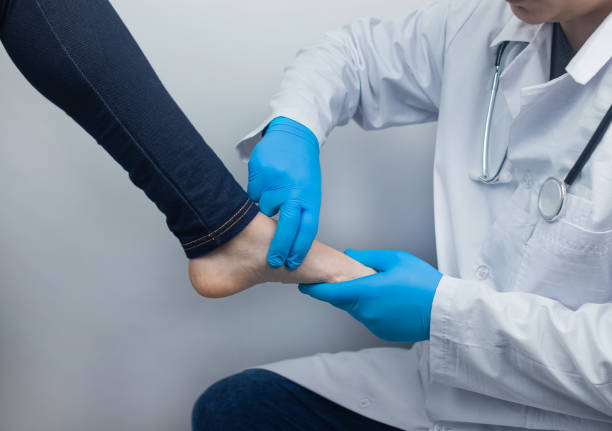How To Prevent Plantar Fasciitis? 7 Effective Tips

One of the most typical causes of foot pain is plantar fasciitis, especially in athletes, senior citizens, and people who are constantly on their feet. Additionally, you may be more prone to developing plantar fasciitis if you have a particular foot shape or gait.
Plantar fasciitis, even when successfully treated, can recur. Here is some preventative advice from experts.
Table of Contents
7 Effective Tips to Prevent Plantar Fasciitis
1. Get Lots of Rest
Staying off your feet can be helpful in reducing both of these issues since irritation and inflammation are what causes plantar fasciitis pain, so pain is also reduced. While you’re sleeping, keep your feet up, and only engage in low-impact exercises like cycling or swimming. Eliminate any running or jumping from your daily activities. Additionally, if your job entails a lot of standing, see if there is a way to sit down more frequently or use an elevated stool to relieve some of the strain on your feet.
2. Stretch Your Feet
Gently stretching the bottoms of your feet before exercise or activity can help “warm up” the plantar fascia and the muscles that surround it, so your entire foot is more flexible and therefore less prone to injury and pain. Additionally, stretching promotes circulation, which aids in the healing process. We can show you specific exercises that won’t put undue strain on your foot during your office visit.
3. Night Splints
Consider putting on night splints. The calf and plantar fascia of the foot are stretched while you sleep with these. Additionally, night splints assist in giving the user the supportive stretching they might require while they are on their feet during the day.
4. Lose Excess Weight
The pressure on your feet, especially the arches, increases with weight gain. Losing that weight can lessen the stress on your plantar fascia ligament and other foot-supporting structures. (Not to mention all the other possible health advantages you might experience.)
5. Wear the Right Shoes
In addition to making sure your shoes give your feet (and your ankles) enough support, good arch support is a key factor in preventing the recurrence of plantar fasciitis. Active people should replace their athletic shoes frequently because the structure of their shoes can deteriorate with use. Avoid wearing flat-bottomed shoes like flip-flops and slippers as much as you can because they offer no arch support at all.
6. Invest in Custom Orthotics
One of the best ways to stop plantar fasciitis from reoccurring is with custom orthotics, or special shoe inserts made just for you. Custom orthotics are based on your foot shape and the issue you need to have treated for much better results than over-the-counter inserts that take a one-size-fits-all approach. Furthermore, because they are long-lasting, they can help you save a ton of money over time.
7. Schedule a Visit at the First Sign of Pain
There are numerous methods for treating plantar fasciitis, which is extremely common. Scheduling an appointment as soon as you experience pain is one of the best ways to prevent painful symptoms from returning because you will receive prompt treatment that will stop the issue from getting worse.

Treatment for Plantar Fasciitis
Medications
Plantar fasciitis pain and inflammation can be reduced with the help of painkillers like ibuprofen (Advil, Motrin IB, and others) and naproxen sodium (Aleve).
Therapies
Symptoms might be alleviated by physical therapy or by using specialized equipment.
• Physical therapy. You can learn exercises from a physical therapist to strengthen your lower leg muscles while stretching the plantar fascia and Achilles tendon. A therapist might also instruct you on how to support the bottom of your foot by using athletic tape.
• Night splints. Wearing a splint that holds the plantar fascia and Achilles tendon in a lengthened position overnight to promote stretching while you sleep may be advised by your physical therapist or medical professional.
• Orthotics. To distribute pressure on your feet more evenly, your doctor may recommend orthotics (arch supports, either off the shelf or made to order).
• Walking boots, canes, or crutches. In order to prevent you from moving your foot or from putting all of your weight on it, your doctor may advise using one of these for a brief period.
Surgical Or Other Procedures
If more-conservative measures aren’t working after several months, your healthcare provider might recommend:
• Injections. The tender area may experience momentary pain relief after receiving an injection of steroid medicine. Multiple shots are not advised because they may weaken your plantar fascia and increase the risk of a rupture. You can inject yourself with platelet-rich plasma to speed up tissue healing in the sore area. The use of ultrasound imaging during injections can help ensure accurate needle placement.
• Extracorporeal shock wave therapy. For the purpose of promoting healing, sound waves are directed at the painful heel area. This is for persistent plantar fasciitis that hasn’t improved with more conservative therapies. Even though this therapy hasn’t been proven to be consistently effective, some studies have shown encouraging results.
• tissue repair using ultrasound. Using ultrasound imaging, a needle-like probe is guided into the injured plantar fascia tissue using this minimally invasive technique. After which, the damaged tissue is broken up by the probe tip’s rapid vibrations and suctioned out.
• Surgery. Surgery is rarely necessary to separate the plantar fascia from the heel bone. It is typically only a choice in cases of extreme pain where all other options have failed. With local anesthesia, it can be carried out as an open procedure or through a tiny incision.
Summary
One of the many reasons why people experience chronic foot pain is plantar fasciitis. Whatever the cause of your excruciating symptoms, there’s one thing you can count on: one of the best ways to stop your issue from getting much worse is to seek treatment right away. Don’t let foot pain affect your way of life.
